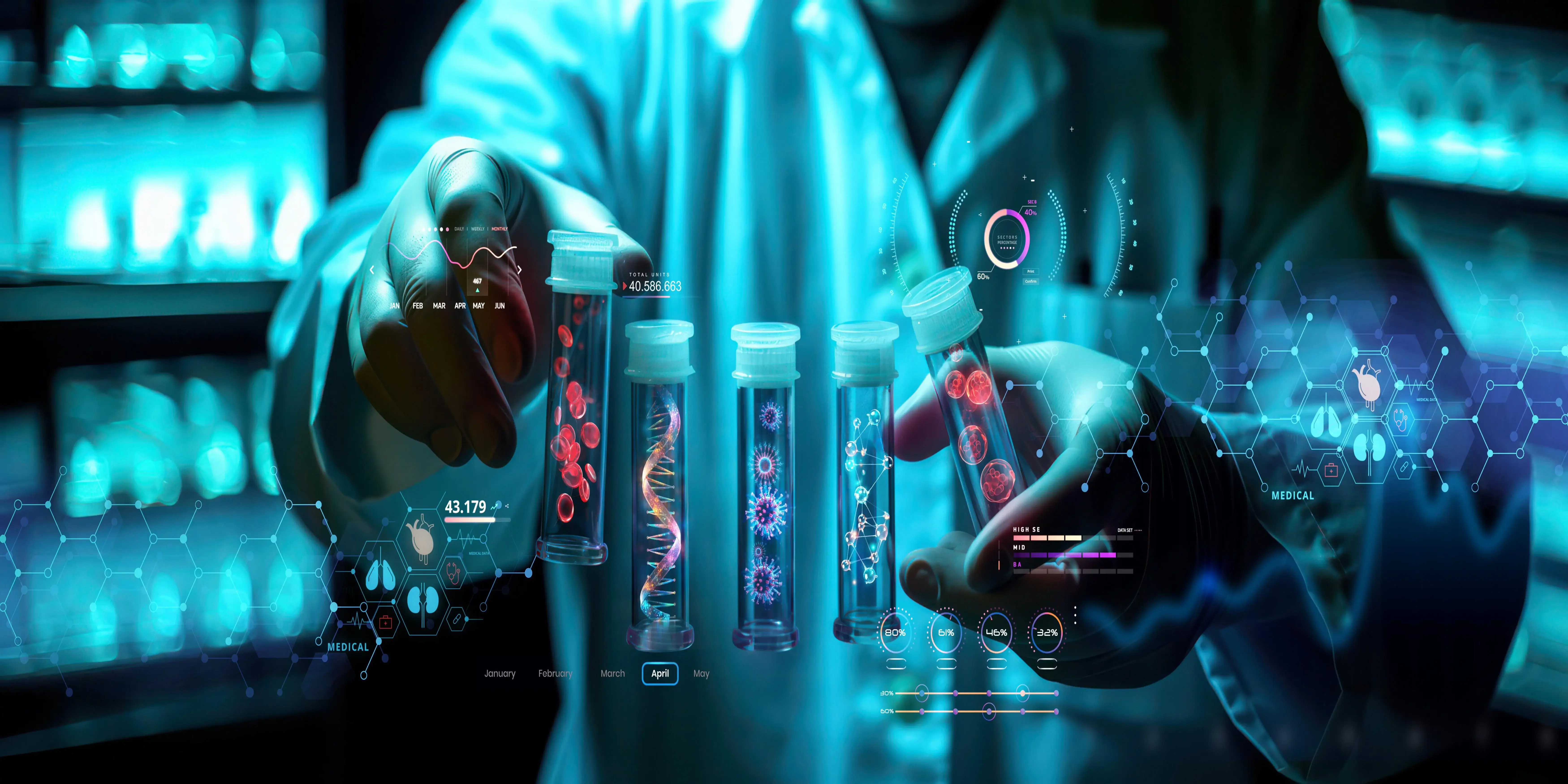Imagine having a glimpse into the past, a frozen snapshot of a patient's medical history or a preserved piece of tissue that can provide insights into a disease's progression. This is precisely what FFPE and frozen biospecimen samples offer to the medical and scientific community. These specimens are invaluable resources, and in this article, we will uncover the secrets behind them.
Understanding FFPE Samples
The Basics of FFPE
FFPE, or Formalin-Fixed Paraffin-Embedded, samples are a type of biological specimen that has been preserved using formalin and embedded in paraffin wax. This preservation method allows tissues to be stored for extended periods while maintaining their cellular structure.
The World of Frozen Biospecimen Samples
Freezing for Preservation
Frozen biospecimen samples, as the name suggests, involve freezing tissues or cells at extremely low temperatures. This method preserves the biological material in a near-native state.
Advantages of Frozen Biospecimens
The frozen samples offer distinct advantages, such as the ability to study live cells, proteins, and DNA in their natural state. This is particularly valuable in studying diseases with a genetic component.
Handling and Storage of FFPE and Frozen Biospecimen Samples
Ensuring Sample Integrity
Proper handling and storage are crucial to maintain the integrity of FFPE and frozen biospecimen samples. Researchers must follow strict protocols to prevent degradation and contamination.
The Role of Cryopreservation
Cryopreservation is a specialized technique used for freezing biospecimens. It involves controlled cooling and the use of cryoprotectants to safeguard the samples during freezing and thawing processes.
What Are FFPE Biospecimen Samples?
Characteristics of FFPE Biospecimen Samples
Formalin-fixed paraffin-embedded (FFPE) samples have been a cornerstone of histopathology for decades. These specimens are prepared by immersing tissues or cells in formalin to preserve cellular structures and proteins and subsequently embedding them in paraffin wax. FFPE samples offer several advantages:
Long-term Stability: FFPE samples can be stored for decades without significant degradation, making them valuable for retrospective studies.
Preservation of Morphology: FFPE preserves tissue morphology and cellular architecture, allowing pathologists to make accurate diagnoses.
Compatibility with Histology: FFPE samples are ideal for histological analyses, enabling the staining of tissues with various dyes for microscopic examination.
Preparation of FFPE Biospecimen Samples
To prepare FFPE biospecimen samples, several critical steps must be followed:
Fixation: Tissues or cells are immersed in formalin, typically buffered with phosphate, for a specified duration to cross-link proteins and preserve cellular structures.
Dehydration: Samples are dehydrated using a graded series of alcohol to replace water with ethanol.
Clearing: Xylene or other clearing agents are used to remove alcohol and facilitate paraffin infiltration.
Embedding: The dehydrated tissues or cells are embedded in molten paraffin wax to create a solid block.
Sectioning: Thin sections (usually 4-5 micrometers) are cut from the paraffin-embedded block for downstream analysis.
Staining: Sections can be stained using various methods, including hematoxylin and eosin (H&E) staining, immunohistochemistry (IHC), and in situ hybridization.
Applications of FFPE Biospecimen Samples
FFPE biospecimen samples find widespread applications in biomedical research and clinical diagnostics:
Histopathology: FFPE samples are crucial for diagnosing diseases, grading tumors, and monitoring disease progression.
Biomarker Discovery: FFPE tissues are used to identify and validate biomarkers for various diseases.
Cancer Research: Researchers can study genetic mutations and gene expression patterns in archived cancer tissues.
Drug Development: FFPE samples are used to assess drug efficacy and toxicity in preclinical studies.
What Are Frozen Biospecimen Samples?
Characteristics of Frozen Biospecimen Samples
Frozen biospecimen samples involve the rapid freezing of tissues or cells at ultra-low temperatures, typically -80°C or in liquid nitrogen. Frozen samples offer unique advantages:
Preservation of Biomolecules: Frozen samples retain the integrity of DNA, RNA, proteins, and metabolites, making them ideal for molecular analyses.
Suitable for High-Throughput Techniques: Frozen samples are well-suited for high-throughput omics studies, such as genomics, transcriptomics, and proteomics.
Minimal Artifacts: The absence of fixation chemicals in frozen samples reduces the risk of chemical artifacts during analysis.
Preparation of Frozen Biospecimen Samples
To prepare frozen biospecimen samples, researchers need to follow specific protocols:
Rapid Freezing: Tissues or cells are rapidly frozen using liquid nitrogen or a controlled-rate freezer to prevent ice crystal formation.
Storage: Frozen samples are stored at ultra-low temperatures (-80°C or below) to maintain sample integrity.
Sectioning: Frozen tissues can be cryosectioned into thin sections for various analyses.
Applications of Frozen Biospecimen Samples
Frozen biospecimen samples are essential for a wide range of research applications:
Genomic Analysis: Frozen samples are ideal for whole-genome sequencing, genotyping, and copy number variation analysis.
Transcriptomics: RNA extraction from frozen samples enables gene expression profiling and RNA sequencing (RNA-Seq).
Proteomics: Frozen tissues can be used for protein extraction and mass spectrometry-based proteomics.
Metabolomics: Researchers can analyze the metabolite profiles of frozen samples to study metabolic pathways.
The choice between FFPE and frozen biospecimen samples depends on the research objectives and available resources. Researchers should consider several factors:
Research Goals: Determine whether the study requires histopathological analysis or molecular profiling.
Sample Availability: Archived FFPE samples may be the only option for retrospective studies.
Budget and Equipment: Frozen samples may require specialized storage and processing equipment.
Molecular Analysis: If the primary focus is on DNA, RNA, or protein analysis, frozen samples are preferred.
Integration of FFPE and Frozen Samples
In some cases, integrating both FFPE and frozen samples can provide a comprehensive perspective:
Parallel Analysis: Researchers can simultaneously analyze FFPE sections and frozen extracts to obtain both histological and molecular data.
Correlation Studies: Correlating histological findings from FFPE with molecular data from frozen samples can enhance research insights.
Top 10 Frozen Biospecimen Samples
Frozen biospecimen samples are the unsung heroes of scientific research and medical breakthroughs. Here is an extension of the top 10 frozen specimens, shedding light on their significance and diverse applications in the world of science. As researchers continue to push the boundaries of knowledge, these frozen specimens will undoubtedly play a crucial role in shaping our future.
Frozen blood samples are invaluable in various medical and scientific studies. They preserve the genetic information, making them crucial for genetic research, disease diagnosis, and forensic investigations.
Frozen tissue biopsies are essential for cancer research and diagnosis. They maintain cellular integrity, allowing researchers to study tissue microenvironments and develop targeted treatments.
Serum specimens contain essential proteins and antibodies. Researchers use frozen serum samples to study diseases, monitor patient health, and develop diagnostic tests.
Frozen DNA extracts are fundamental in genetics research. They serve as the building blocks for genetic studies, DNA sequencing, and gene editing experiments.
Preserving microorganisms at sub-zero temperatures is vital for microbiology. Frozen cultures enable scientists to study bacteria, viruses, and fungi for various applications, including vaccine development.
Frozen urine samples are utilized in clinical and environmental studies. They help diagnose metabolic disorders, kidney diseases, and monitor exposure to toxins.
Frozen bone marrow samples are indispensable in hematological research. They aid in understanding blood disorders, developing therapies, and performing bone marrow transplants.
Frozen cell lines are crucial in cell biology and drug development. They provide a consistent source of cells for experiments and the production of biopharmaceuticals.
Plasma specimens are used to study proteins, enzymes, and hormones. Frozen plasma is vital in research related to blood clotting disorders and autoimmune diseases.
Frozen CSF samples play a pivotal role in neurology and neuroscience research. They help diagnose neurological disorders and study brain-related diseases.
The Incredible Impact of Frozen Biospecimen Samples
Frozen biospecimen samples have had an incredible impact on various fields of research and medicine. These samples, which are carefully preserved at ultra-low temperatures, such as -80°C or in liquid nitrogen, play a vital role in advancing our understanding of biology, genetics, and disease. Here are some of the key ways in which frozen biospecimen samples have made a significant difference:
Advancing Medical Research: Frozen biospecimens, including tissue samples, blood, and other bodily fluids, have been instrumental in medical research. They enable scientists to investigate the molecular and genetic basis of diseases, identify biomarkers, and develop potential treatments and therapies.
Precision Medicine: The study of frozen biospecimens has paved the way for precision medicine, where treatments are tailored to individual patients based on their genetic makeup and specific disease characteristics. This has led to more effective and personalized healthcare interventions.
Cancer Research: Frozen tumor samples have been crucial in cancer research. They allow researchers to study the genetic mutations and variations that drive cancer development and progression. This knowledge has led to the development of targeted therapies and immunotherapies for various types of cancer.
Infectious Disease Studies: Frozen specimens have been vital in studying infectious diseases like HIV, hepatitis, and COVID-19. They enable researchers to isolate and study pathogens, develop diagnostic tests, and understand the immune response to infections.
Biobanking: Biobanks store frozen biospecimens for long-term use, creating valuable resources for researchers. These repositories facilitate large-scale studies and help scientists access diverse samples for their investigations.
Drug Development: Frozen biospecimens are used to screen potential drug candidates and evaluate their effectiveness. This speeds up the drug development process and increases the likelihood of finding new treatments for various diseases.
Stem Cell Research: Frozen stem cell samples are essential for regenerative medicine and the development of cell-based therapies. They offer a source of pluripotent cells that can be used to replace damaged tissues and organs.
Genomic Sequencing: Frozen biospecimens provide high-quality DNA and RNA for genomic sequencing. This has revolutionized our understanding of genetics and genomics, leading to breakthroughs in identifying disease-associated genetic variants.
Longitudinal Studies: Long-term storage of frozen biospecimens allows researchers to conduct longitudinal studies, tracking changes in samples over time. This is particularly valuable in understanding the progression of chronic diseases.
Forensic Science: Frozen biospecimens have applications in forensic science, helping to identify individuals and solve criminal cases through DNA analysis.
Transplantation and Organ Preservation: Cryopreserved tissues and organs have the potential to address the shortage of transplantable organs. They can be stored until a suitable recipient is found, reducing the risk of graft rejection.
Who Can Benefit from Biospecimen Samples?
Biospecimen samples, which include various types of biological materials such as tissues, blood, urine, and DNA, offer a wide range of benefits.Here are some key groups and sectors that can benefit from biospecimen samples:
Medical Researchers: Biospecimens are invaluable for medical researchers studying diseases, genetics, and drug development. They provide essential data for understanding the molecular mechanisms underlying diseases, developing new treatments, and conducting clinical trials.
Clinicians: Healthcare professionals can use biospecimens for diagnostic purposes. Blood, urine, and tissue samples, for example, can help in diagnosing diseases, monitoring treatment progress, and tailoring therapies to individual patients.
Pharmaceutical Companies: The pharmaceutical industry relies heavily on biospecimens for drug discovery, development, and testing. These samples help identify potential drug targets, assess drug efficacy and safety, and streamline the drug development process.
Geneticists: Genetic researchers use biospecimens, particularly DNA and RNA samples, to explore genetic variations, study inherited disorders, and advance personalized medicine approaches.
Epidemiologists: Biospecimens play a critical role in epidemiological studies. They enable researchers to investigate disease prevalence, identify risk factors, and track disease outbreaks, ultimately contributing to public health initiatives.
Forensic Scientists: In forensic investigations, biospecimens such as DNA and bodily fluids are vital for identifying individuals, solving crimes, and providing evidence in legal cases.
FFPE and frozen biospecimen samples are invaluable assets in the realm of scientific research. Their unique properties make them suitable for a wide range of studies, from understanding disease mechanisms to developing novel therapies. By following best practices in sample selection, data integration, and ethical considerations, researchers can unlock the full potential of these biospecimens and contribute to advancements in science and medicine. As technology continues to evolve, the importance of these biospecimens in driving groundbreaking discoveries is set to grow, making them indispensable resources for future research endeavors.



